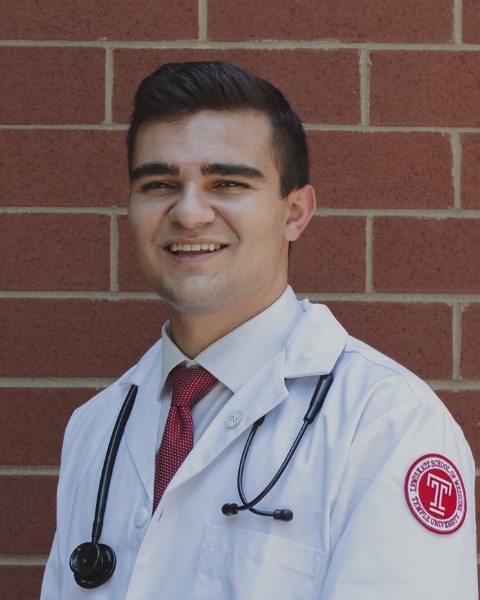Education/Quality/Wellness
Category: Scientific Abstract: Oral/Poster
The Asian American and Pacific Islander Experience in Cardiothoracic Surgery: Challenges and Misconceptions
M. Lesgart1, A. A. Nguyen2, K. Berfield3, R. Kim4, D. Wood3, C. Erkmen5
1Temple Lewis Katz School of Medicine, Philadelphia, Pennsylvania 2Lewis Katz School of Medicine, Philadelphia, Pennsylvania 3University of Washington, Seattle, Washington 4Cedars Sinai Medical Center, Los Angeles, California 5Temple University Health System, Fox Chase Cancer Center, Philadelphia, Pennsylvania
1Temple Lewis Katz School of Medicine, Philadelphia, Pennsylvania 2Lewis Katz School of Medicine, Philadelphia, Pennsylvania 3University of Washington, Seattle, Washington 4Cedars Sinai Medical Center, Los Angeles, California 5Temple University Health System, Fox Chase Cancer Center, Philadelphia, Pennsylvania

Michael Lesgart, B.S.
Medical Student
Temple Lewis Katz School of Medicine
Philadelphia, Pennsylvania, United States
Presenting Author(s)
Disclosure(s):
Michael Lesgart, B.S.: No financial relationships to disclose
Purpose: The racial disparities in academic surgery are well-known, but there is limited literature on the AAPI experience in cardiothoracic surgery. This review and expert commentary elaborates on biases and misconceptions faced by AAPI’s in cardiothoracic surgery along with a proposal to address barriers at institutional and national levels.
Methods: A literature review was conducted to understand the historical background, current adversities, health inequities, and presence of the AAPI community in academic medicine and surgery. An expert panel assembled for the STS Webinar Series to discuss and reflect on the challenges that each panelist faced at various stages of their careers as AAPI cardiothoracic surgeons. The webinar was transcribed and key quotes were extracted from panelists. From this discussion, we illustrated further steps to advocate for underrecognized groups within cardiothoracic surgery.
Results: From the webinar, cultural biases and discriminatory practices were identified as significant barriers impacting AAPI surgeons' career advancement, compensation, and leadership opportunities. For example, a panelist recalled instances where being deferential, a trait instilled by their cultural upbringings, led to misconceptions about preparedness during faculty reviews. Despite her competence and control during surgeries, she noticed the impact of cultural norms on perceptions of her leadership capabilities.
Further discussion revealed that AAPI assistant professors earned lower median and mean salaries from 2021 to 2022, with salaries equalizing only after being promoted through the ranks of academic medicine. Additionally, AAPI CT surgeons are underrepresented in CT leadership positions, comprising 18% percent of chiefs and chairs, with only 1% being Asian women.
The commentary also highlighted the intersectionality experienced by AAPI women in surgery. They encountered dual challenges as both women in a male-dominated field and as Asian individuals facing perceptions of inequitable compensation and recognition.
To address these challenges, the panel emphasized the importance of cultivating allyship and support from colleagues in influential positions. Allies can play a vital role in recognizing and advocating for the contributions of AAPI colleagues, thus promoting career advancement and addressing disparities.
Conclusion: This review and expert commentary reveal challenges faced by AAAPI cardiothoracic surgeons, emphasizing the need to address cultural biases and foster allyship for diversity and inclusion in academic surgery. Further research is vital to create a supportive environment, advancing knowledge and strategies for equity in the cardiothoracic surgery workforce.
Identify the source of the funding for this research project: NA
